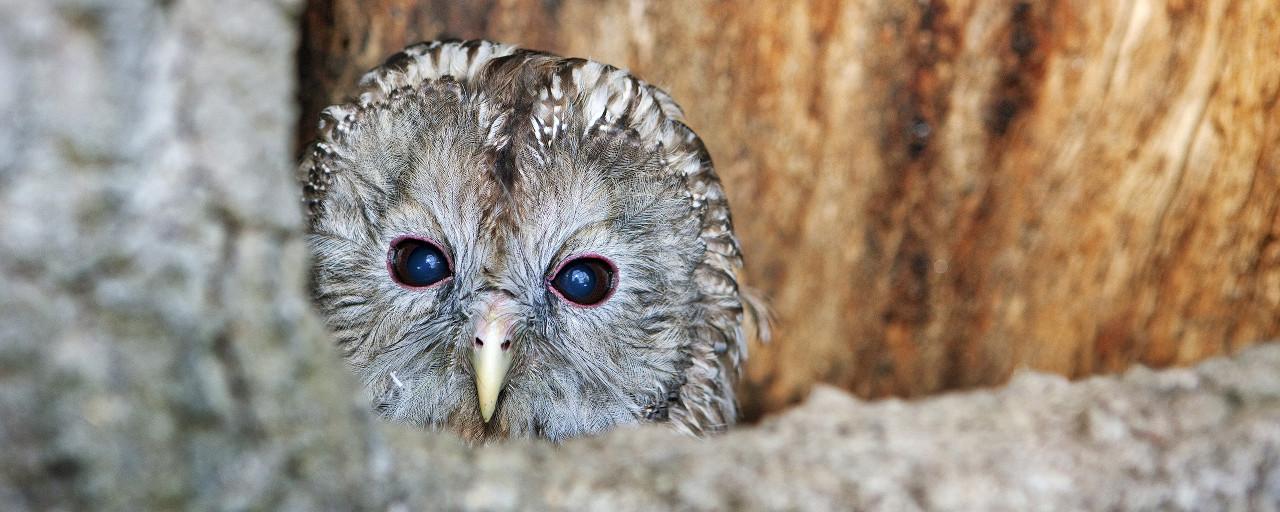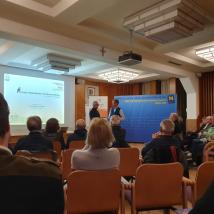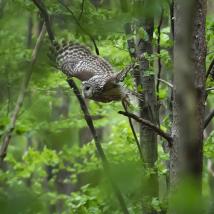Facts
Österreichische Bundesforste, Forst- und Landwirtschaftsbetrieb der Stadt Wien Verein Eulen und Greifvogelschutz (EGS), Österreichische Zoo Organisation (OZO), Land NÖ - RU5 Abteilung Naturschutz, Land NÖ - RU2 Abteilung Raumordung und Regionalpolitik, Forschungsinstitut für Wildtierkunde und Ökologie (FIWI), Wildnisgebiet Dürrenstein
Since 2007 the re-introduction of the Ural owl has been conducted under the guidance of a team of researchers of the Forschungsinstitut für Wildtierkunde und Ökologie (Research Institute for Game Biology and Ecology) of the Veterinärmedizinische Universität Wien (Institute of Veterinary Medicine, Vienna). The goal is to achieve the comeback of this large owl to the forests of Austria where, owing to habitat losses and illegal shooting, the species became extinct in the middle of the 20th century. Thanks to the designation of protected areas and gradual conversion to sustainable woodland management, the living conditions for the Ural owl have improved.
In the light of these findings, an international delegation of experts recommended the reintroduction project in autumn 2006. The release sites selected were the protected areas of the Wienerwald BR and the ’Wildnisgebiet Dürrenstein’. These ecologically highly valuable woodland areas offer these ‘newcomers’ optimal chances of survival. The aim was to create mini-populations for re-colonisation of the areas surrounding release sites in the Wienerwald BR and the Wildnisgebiet Dürrenstein, and to develop links with existing populations abroad, as well as to achieve the conservation of Ural owl habitats. If it is possible to resettle the species in the Austrian part of the Alps, there might be a chance of linking these populations with those south (Slovenia, Italy) and north (Germany, Czech Republic) of our Alpine republic. The migration of owls between the populations would fulfil a useful purpose in maintaining gene flow within the European metapopulation thus safeguarding the survival of this rare species.
The method for releasing the young Ural owls has been tried and tested in the Bayrische Wald National Park where re-introduction has succeeded and the species has been reproducing successfully since the 1970s: The juvenile birds and their parents were first transferred to reintroduction enclosures located exactly where they were going to be released. In late summer, the enclosures were partitioned and the juvenile birds released to make their home in the surrounding habitat while the parent birds were kept behind in the enclosure to make the Young birds bond firmly with the local area. In order to assess the project’s progress, continuous monitoring of the released birds was absolutely vital. The owls were therefore fitted with transmitters. This ensured that it was possible to know at all times where the birds were. Furthermore, a high-tech nestbox system was installed. This way it was possible to check birds easily during the breeding season. Since the project started 100 Ural owls were successfully set free and 39 outdoor breeding successes were documented.





